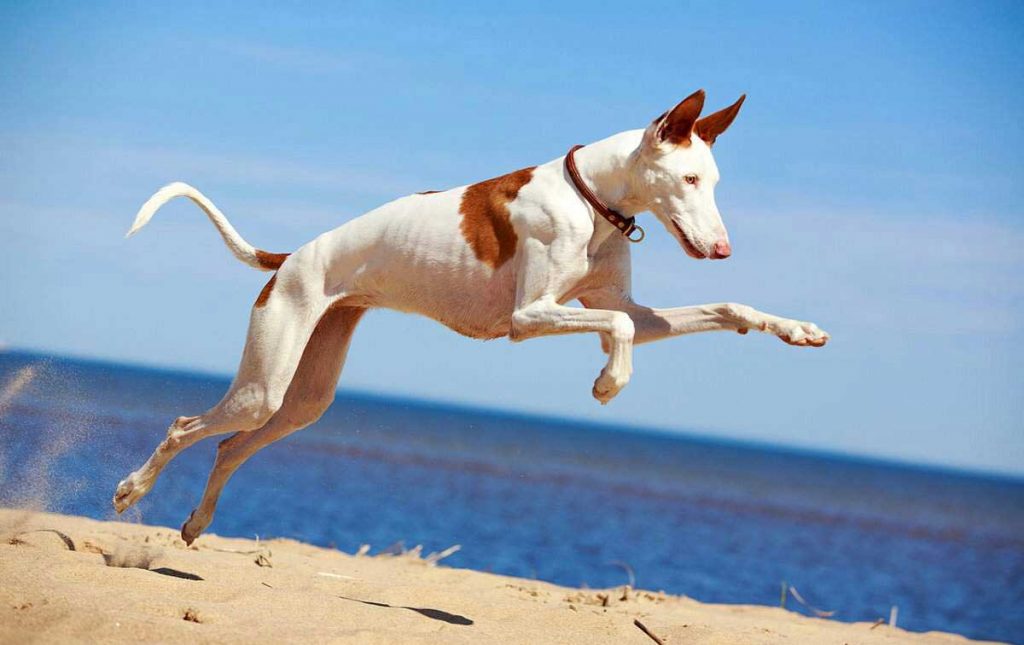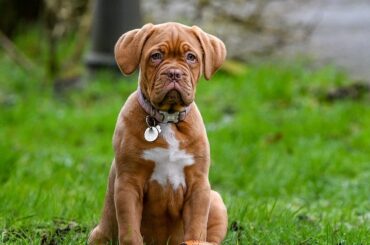The Ibizan Hound, as well as the Pharaoh Hound, are said to have shared ancestral roots; the former shows a striking similarity to the Egyptian tomb canines consecrated to the jackal god Anubis. The dogs may have been introduced to the Balearic Islands by ancient Phoenician sea traders, who kept them in solitude.
The Pharaoh Hound, the Cirneco dell’Etna, the Portuguese Podengo, and the Podenco Canario are all breeds that are comparable in function and type to the Ibizan Hound. The biggest of these varieties is the Ibizan Hound.
Ibiza has been ruled by various kings over the centuries, including Egyptians, Chaldeans, Carthaginians, Romans, Vandals, Arabs, and, most recently, the Spanish. They were employed for hunting by Spanish farmers on the island. Ibiza’s dogs have remained unaffected by hybrids to other breeds due to a lack of outside influence. The harsh conditions on the island necessitated strict islander selection, as only the greatest rabbit hunters were allowed to spawn, let alone survive.

In the 1950s, the Ibizan Hound was first brought to the United States. The Ibizan Hound’s outstanding physical beauty first drew attention, but the breed would never become a popular companion. The Ibizan Hound was eventually recognized by the American Kennel Club in 1979; however, it remains a rare breed today.
Table of Contents
Physical Appearance
With an athletic and appealing form and a ground-covering bouncy trot, the Ibizan Hound is an attractive and nimble breed. It is a sturdy breed with good bone girth. Its big upright ears, which are wide at the base and enclose a long and beautiful headpiece, are framed by a long and exquisite headpiece. Long and slender, the neck is. It has a distinctive front assembly with relaxed shoulders and an upper arm that is generally straight.

Depending on whatever Standard you follow, the Ibizan can be 22 to 29 in (56 to 74 cm) tall and weigh 45 to 65 lb (20 to 29 kg), with males being larger and stronger. Their coat is a mix of red and white, with a light tan nose, ears, and eye rims, as well as the pads of their feet. It has an attentive and inquisitive countenance and its eyes are beautiful amber color.
Behavior
Though they can be tough and obstinate at times, they respond well to positive training approaches, but they will resist punitive training methods. They are quiet in general but will alarm bark if necessary, making them excellent guard dogs. They are sensitive hounds who get along well with both children and other dogs. They make terrific home dogs, but because they are lively and athletic, they require a lot of daily exercises.

They are not suitable as kennel dogs. Ibizan hounds are affectionate, but they are also stubborn and self-reliant. They can jump amazing distances from a standstill, thus they require extremely high fences. They are genuine dog jokers, enjoying amusing their owners with their actions. The exquisite Ibizan Hound uses its keen olfactory senses and listening to search for small creatures while preserving its hunting instinct.
It also enjoys barking when chasing any creature, which distinguishes it from the majority of sighthounds. The majority of Ibizan Hounds are wary of strangers, but some are fearful. This breed is loyal, even-tempered, peaceful, and mild by nature, making it ideal as a quiet house companion.
Training and Caring
Daily exercise in a safe environment is required for the Ibizan Hound. Lengthy walks or jogs on a leash, along with the occasional chance to run at full speed, are ideal exercises for dogs, but they can also be met by long walks or jogs on leash. Brushing the smooth coat only once in a while is sufficient, however brushing the wire coat once a week is required.
Health
The Ibizan Hound, like the rest of the hound family, has a low incidence of hereditary disease. Seizures and allergies are minor health concerns for the breed; extremely occasionally, axonal dystrophy, cataract, retinal dysplasia, and deafness are seen in the breed, which lives between 12 and 14 years.




